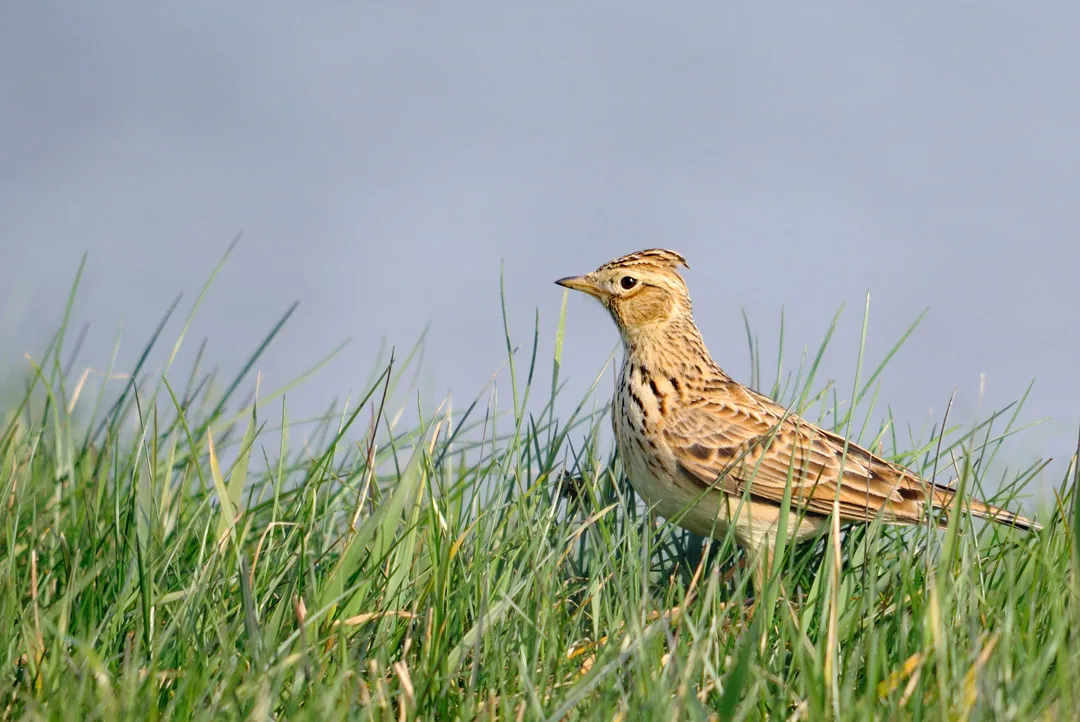Citation

Overview
Agriculture is a major driver of global biodiversity decline. One policy mechanism being used to address the impacts of agriculture is the use of financial incentives, encouraging landowners to farm in a way that benefits biodiversity. Within Europe, this approach is delivered through agri-environment schemes (AES). The effectiveness of these schemes has been examined, highlighting mixed benefits for biodiversity generally and for specific taxonomic groups, but our understanding is incomplete. A significant knowledge gap is the amount of AES provision that is needed within a landscape to deliver the hoped-for biodiversity outcomes. This paper addresses this knowledge gap for farmland birds in the UK.
In more detail
The Royal Society for the Protection of Birds (RSPB) and Natural England funded this work through the Action for Birds in England programme. We are grateful to the RSPB fieldworkers, the British Trust for Ornithology and BBS volunteers for the avian data. We are also grateful to the landowners for access, Rob Field for higher-tier site recruitment and Gavin Siriwardena for the agri-environment data. Thanks to the Associate Editor (Urs Kormann), Editor (Jos Barlow) and two anonymous reviewers for their helpful comments on an earlier version of this paper. The authors are based in the region where this study was carried out.
Abstract
Agri-environment schemes (AES) are the primary policy mechanism for addressing farmland biodiversity declines across Europe. Despite previous studies on the impacts of AES on biodiversity, there is little empirical evidence on the scale of provision required to reverse declines.
Across three regions of lowland England with contrasting farm systems (arable, pastoral, mixed), we estimated avian population growth rates (PGRs) on farmland with high AES provision (‘higher-tier’: average bird-friendly option cover = 7.4%), low AES provision (‘lower-tier’: 2.3%) and no bird-friendly AES (‘no AES’). Ten-year PGRs were derived for 24 species and three multi-species groups comprising farmland-associated species (‘farmland birds’), species of conservation concern (‘priority birds’) and species restricted to farmland (‘specialist birds’). We used PGRs to simulate the proportion of the regional farmland landscape that would have to be assigned to higher- and lower-tier agreements to stabilise or increase populations.
In the arable and pastoral regions, 13/23 and 13/22 species, respectively, had more positive PGRs under higher-tier AES than on no AES farmland (none had more negative PGRs), compared to 4/22 (positive) and 1/22 (negative) in the mixed region. Only two to four species per region exhibited more positive PGRs under lower-tier AES compared to no AES farmland.
Multi-species PGRs in the arable and pastoral regions increased from no AES (strong decline), to lower-tier (decline or stability) to higher-tier (moderate or strong increase). There was no overall AES effect in the mixed region.
To increase regional farmland bird populations by 10% over 10 years, 47% and 26% of the farmed landscape would need to be devoted to higher-tier agreements in arable and pastoral landscapes respectively. This falls to 34% and 17% when higher-tier is targeted at localities supporting higher abundances of target species, and to 29% and 10% when 30% of the farmed landscape is also devoted to lower-tier. Priority and specialist birds require higher provision levels.
Policy implications. Where farmland bird recovery is an AES objective, farms should prioritise higher-tier agreement delivery over lower-tier. Farmland bird responses to AES provision are likely to vary regionally, but careful targeting will reduce the amount needed in the landscape.
